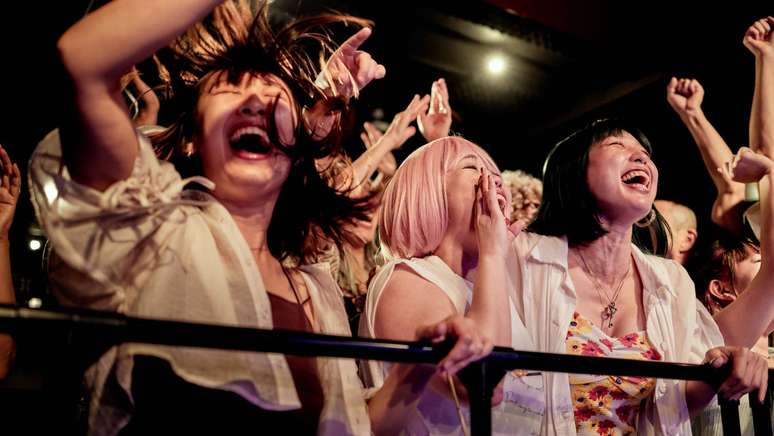Spinal deviation usually appears during the growth spurt in adolescence and is more common in girls
Noticing one shoulder higher than the other, some difference between the sides of the hip, or pain in the lower back. These can be common symptoms of sufferers scoliosisa deformity in the vertebral column which leaves it in the shape of an “S”. Often, in cases of mild curvature, it is not possible to be noticed quickly, but the sooner treatments are started, the better the result will be in containing the progression of the disease.
Explains the orthopedist and professor of the Faculty of Medicine of the University of São Paulo (FMUSP), doctor of the scoliosis group of the AACD, an organization that offers assistance to children with disabilities, Alexandre Fogaça what are the types of scoliosis: congenital, syndromic, neuromuscular, and idiopathic, the latter being the most common.
The World Health Organization (WHO) points out that approximately 4% of the world’s population suffers from idiopathic scoliosis, a progressive spinal deviation with no apparent cause. In Brazil, there are approximately 6 million people living with scoliosis, mostly female adolescents, the age group with the highest prevalence.
What are the treatments for scoliosis?
“It mainly strikes during adolescence, because it coincides with the growth spurt. Research has shown that there is a conservative treatment for scoliosis, which is why early detection is very important, because if we catch it in the early stages, there is the treatment,” says the doctor, coordinator of the spinal nucleus of the Sírio-Libanês hospital.
The curvature of the spine is called scoliosis when it exceeds ten degrees. One of the forms of treatment is that of *specific exercises for scoliosis*, which improve posture and also prevent the progression of the curve. In addition to follow-up with an orthopaedist, the exercises should be performed under the supervision of a physical therapist.
Another option, as the orthopedist explains, is to use life jackets, which are effective in containing the progression of higher degree curvatures in adolescents, when the spine is still in the development stage. Law student Fernanda Prado, 22, a Campo Grande (MS) resident, was diagnosed with scoliosis in childhood, at age 8, and has tried some of the treatment options available.
She began treatment with a brace at the age of 14, when her spine was already at 38 degrees. The pain, says Fernanda, she felt since he was 13 years old. After two years of trying to relieve symptoms and ease her scoliosis, she Fernanda had her orthopedic brace removed. At that time, her spine already had a 47-degree curvature.
In addition to the jacket, she says she has undergone treatments since the beginning of the diagnosis and, over the years, has practiced activities such as pilates, swimming, bodybuilding and Global Postural Re-education (RPG).
“It was good for me, because I was able to have a bodily awareness of what I should look like, even though when I took it off it didn’t look like it should. I respected myself a lot and I respected the disease that I had. But I didn’t think of the surgery as something that was going to happen to me until I saw it was unsustainable,” she recalls.
What are the problems caused by scoliosis?
But in addition to the pain and impacts on self-esteem, other effects of this deformity are the biggest problem, as explained by the doctor Adriano Esperidião, specialist in Spine Endoscopy and Spine Diseases and Deformities, member of the Brazilian Society of Orthopedics and traumatology (Sbot ).
“The greater the deformity, the more it is involved in compressing an internal organ. For example, lung, heart. When this angle is very acute or very high, then it begins to compress. From a forty degree angle, there is only indication to operate, because it will get worse. When you operate you can correct the curve and prevent it from getting worse,” warned the doctor.
In April of this year, already at 55 degrees, Fernanda opted for the operation. She recalls that the intense pain was one of the reasons for seeking the surgical procedure to correct her spine. After having an operation in August, with the orthopedist Alexandre Fogaça, in São Paulo, Fernanda is celebrating to no longer feel any kind of pain.
“Earlier in the year I started feeling a lot more pain. I was in pain all day, I couldn’t stand the pain. I had to stop driving a couple of times, because I was in pain,” she recalls about the decision to opt for surgery.
That is, treatment is performed according to the severity of the spinal deformity and it ranges from non-surgical procedures, such as the use of life jackets, specific exercises with physiotherapy, to even more invasive treatments, such as surgery.
Physiotherapy and scoliosis, an important combination
“Depending on the symptoms and the degree of the deformity, we always try a conservative treatment before opting for surgery. In the specific exercise for scoliosis, thinking of the child, the physiotherapist will teach him to contract one part of the muscles to lengthen the others , together with physiotherapy, exercise and improvement of posture as a whole,” Fogaça stressed.
The physiotherapist and president of the Association of Physiotherapists of Brazil (AFB), Denise Flavio de Carvalho, emphasizes that in seeking treatment it is necessary to carry out a careful assessment of the living conditions of the person, how with what he works and how he develops his activities day after day.
“Depending on the cause, it is possible to reduce or stop the deviation through specific exercises, stretching, but there are situations that require surgery related to aquatic physiotherapy, as well as others that are defined according to individual assessment,” he said.
🇧🇷The best content in your email for free. Choose your favorite Terra newsletter. Click here!
Source: Terra
Ben Stock is a lifestyle journalist and author at Gossipify. He writes about topics such as health, wellness, travel, food and home decor. He provides practical advice and inspiration to improve well-being, keeps readers up to date with latest lifestyle news and trends, known for his engaging writing style, in-depth analysis and unique perspectives.


-1je9vk8ji8pr9.jpg)





